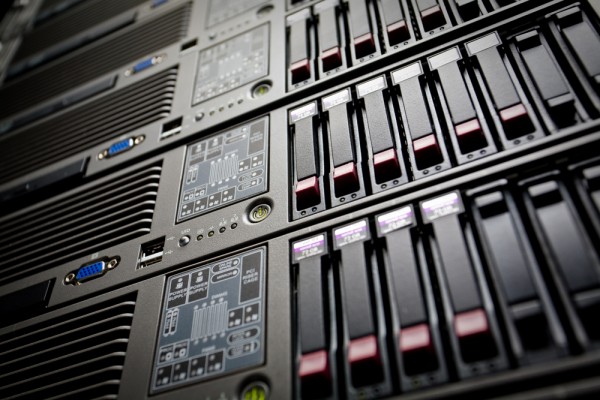THE MACHINE-A Clue Perhaps ?
posted on
Apr 06, 2015 07:04PM



The Machine is the name of a project HP is developing for data centers based on several novel technologies. At this distance, The Machine seems like a fantasy as it’s still at least two years from its launch as a unified product.
If the project is successful, it may replace what we consider computers now; the promised changes to server power draw alone would be revolutionary. It’s initially intended for data centre use, but established, expensive technologies tend to trickle down to individual consumers eventually. Examples of the trickle down effect of technologies first widely implemented on a business level are numerous, and include tech such as solid state disks, 64 bit operating systems, and multiple cores. It may be that the technologies HP is developing will become ubiquitous in the industry for both consumers and businesses.
HP has already begun rolling out technologies related to the Machine, intending to base its specialized cores on its Moonshot technology.
To understand the breadth of HP’s ambition, here’s an overview of the technologies they intend to implement in the Machine:
HP also intends to increase security at the hardware level, which would be a relief considering the firmware issues present right now.
As yet, some of these technologies have no functional consumer models. HP has competition in some of these endeavors, but it appears to be alone in attempting to replace the system from top to bottom.
As it stands, the only major companies that create x86 processors are AMD, Intel and VIA, making them integral to most home computers. AMD and Intel compete heavily to introduce new processor technologies and AMD is heavily involved in HSA (Heterogeneous System Architecture). Among HSA’s goals is one similar to the Machine’s intent to flatten architecture, although less drastic. HSA is intended to more efficiently orchestrate the processing power of GPUs and CPUs to utilize their strengths more effectively. The scope of this project is fairly large; the HSA Foundation (HSAF) created to promote HSA has a distinguished list of members and weight in the industry. The HSAF it has to both replace hardware and engage developers at the same time. HSA uses existing parts more efficiently; the Machine intends to replace those parts entirely.
That’s the first of the Machine’s hardware challenges. The second is that it’s rethinking the physics behind computing. This research isn’t brand new, but it hasn’t seen mass market production yet. Memristors utilize ions to create durable solid state memory and HP intends to replace all functional memory with it. HP intends to launch memristors as a separate product later this year.
HP also intends to use photonic interconnects seen in fibre-optic networks on a computer level, which requires reducing the size of the beam even further. It’s not the first developer to tackle this project, but if successful, HP believes photonic interconnects would reduce power consumption considerably.
The next challenge is building new operating systems while involving 3rd party developers in creating software for those operating systems. HP appears to be developing both a desktop-oriented OS as well as a mobile one. These are familiar challenges as both Apple and Google have successfully created markets for mobile devices. The mobile marketplace is extremely lucrative, making it a success for both developers and their hosts, although not every company has succeeded in reproducing the success of the trailblazers.
Far from the mobile marketplace, the home computer marketplace hasn’t had any major shake-ups since cloud computing took off. Considering the lack of shake-ups in the marketplace, it is no wonder that home computer users are slow to migrate between versions, let alone platforms. Because of the slow migration of users, Microsoft has had trouble convincing its users to upgrade, while Apple has tried to approach the issue by offering upgrades for free.
Many consumers have invested thousands in services like Steam, Origin or the App store, anchoring users to a particular platform. To ease the pain of transitioning between platforms, Apple introduced Boot Camp and there are several emulation services available to use Windows in an OS X environment. Consumer loyalty inspired by investments tied to a particular platform may prove a deterrent to any new operating systems for individual consumers, not to mention the difficulty of relearning basic tasks and simple inertia. Despite these expected problems, HP’s project doesappear to be progressing.
For the Machine to be successful, all of those technologies would have to succeed and companies would have to adopt it. To be adopted by typical consumers, the hardware would have to fall in price, and consumers and developers would have to embrace the new OS. Only time will tell if HP’s holistic approach will seize the market, or if the technologies it intends to introduce will be absorbed by the dominant market forces and integrated into existing systems one breakthrough at a time.
Published under license from ITProPortal.com, a Net Communities Ltd Publication. All rights reserved.